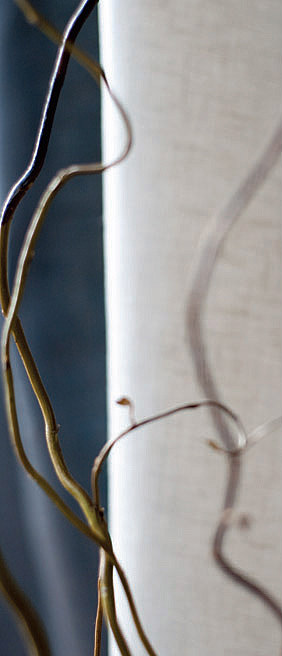
![]()
Over 4,000 years ago the Egyptians were cultivating linen (European Flax), naming it "woven moonlight" due to its beautiful lustre and sheen.
During the first Millennium BC Egyptians mostly wore linen. By the Roman period however, many people wore linen tunics for comfort with wool robes worn over top for warmth. This practice continued and was common during the Middle Ages in Europe so much so that "linen" came to mean “underwear". Our word "lingerie" is in fact derived from and related to the word linen.
Linen bandages were always used during the anointing of the mummies and also for the vestures of the priests as linen was considered to be a symbol of purity.
Flax played an important role in Europe during the Middle Ages but with the dawn of the Industrial Age, a steady decline of linen set in throughout Europe. Craftsmanship demanded by linen became increasingly expensive, and the rapid development of the synthetic textile industries pushed flax further aside.
It's only been in the past few years that linen has been rediscovered, and this has led to today's renaissance. A new sense of the ecological consequences of what we cultivate and produce is driving the rediscovery of linen’s wonderful qualities.
Hemp is a wonderful, versatile, and strong natural fibre that is staging a comeback worldwide as its unique textile qualities are being rediscovered.
The first use of hemp fibre dates well back into the mists of time and is one of the first plants known to have been cultivated. About 10,000 years ago, hemp industries appeared simultaneously in China and Eurasia for the production of a textile fibre. One of the oldest known relics of human industry is a trace of hemp fabric from about 8000BC in the “Cradle of Civilisation” at Catal Huyuk (Ancient Mesopotamia).
Hemp has played a vital role for humanity for many thousands of years, supplying the worlds strongest natural fibre, used for rope, clothing, sail cloth, and many other uses including being a vital food source - the seed oil is very high in the nutritionally valuable Omega 3 alpha-linolenic acid (ALA).
The United States of America’s founding fathers were strong advocates of a hemp-based economy for their new country. In fact, George Washington and Thomas Jefferson were hemp farmers. In 1871 Thomas Jefferson said, “Hemp is of first necessity to commerce and marine”. In other words, to the wealth and protection of the country, today few people realise that hemp was once so vital to world commerce.
The first two drafts of the Declaration of Independence were written on hemp paper, as were most of the books of the time. The first Levi’s were constructed of recycled hemp sailcloth for the California '49ers with steel rivets so that the pockets would not rip when filled with gold. Many famous artists such as Van Gogh also painted some of their greatest works on hemp canvas.
Even the modern word canvas is a direct derivative of the ancient Greek word Kannabis originally a Scythian word for Hemp.
Hemp is a beautiful fibre soft yet extremely strong with a wonderful natural sheen ideally suited for todays textiles and soft furnishings.


